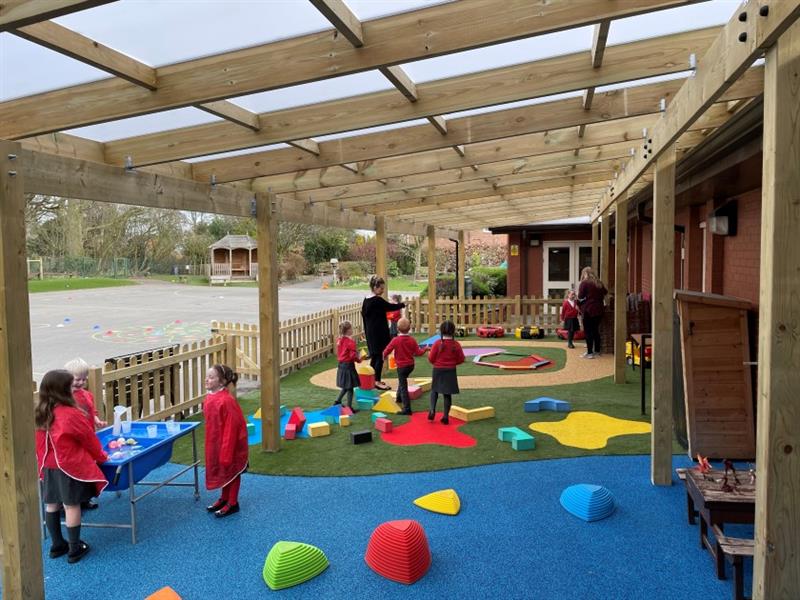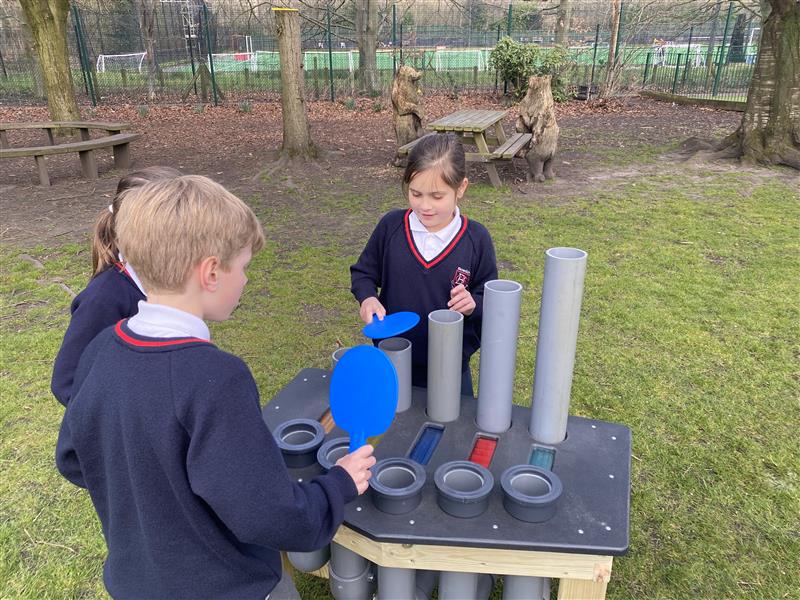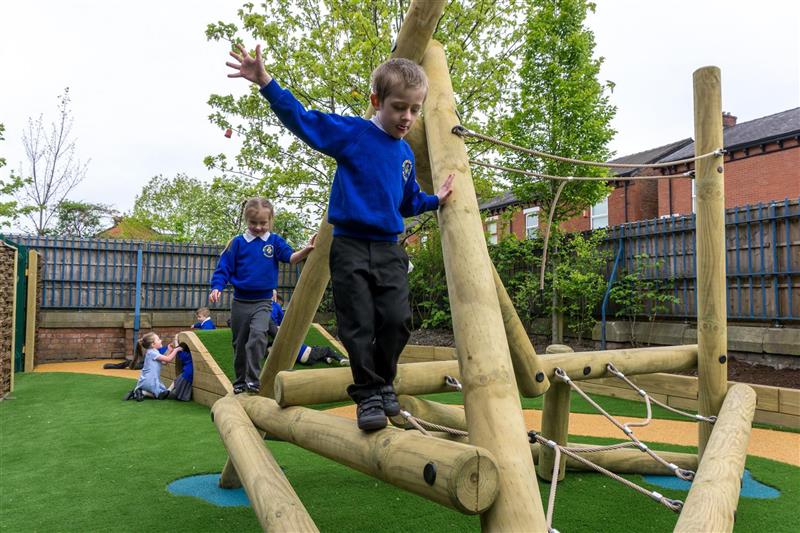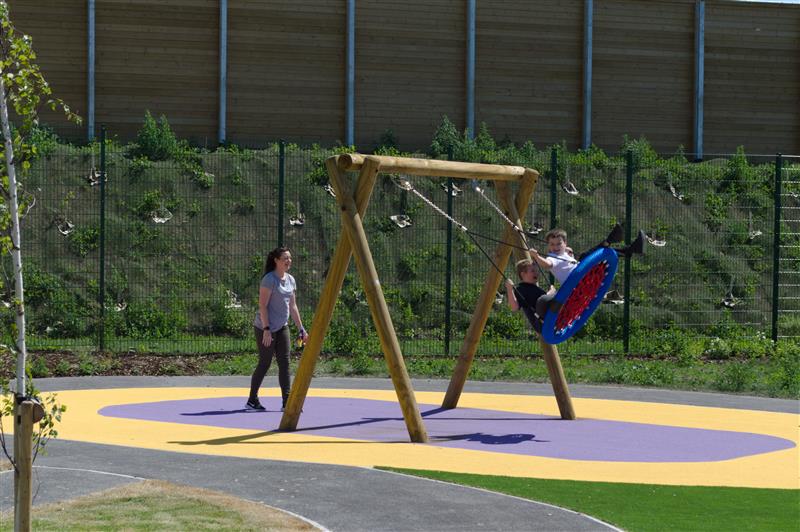.jpg)
Children's Health
The meaning behind World Children's Day and how you can commemorate it!
World Children’s Day was created in 1954 by the United Nations and was known as Universal Children’s Day. It is celebrated every year on 20th November with countries such as France, Greece, Canada, Denmark, and Kenya celebrating the day to encourage international togetherness, improving children’s welfare and awareness among children worldwide.
However, in the UK and Spain, World Children’s Day is also known as National Children’s Day which is celebrated on the second Sunday of every May yearly. Therefore, World Children’s Day is celebrated on different days worldwide.

This November World Children’s Day will promote Standing Up for Children’s Rights.
UNICEF runs the annual event for World Children’s Day which is their annual day of action for children, by children, marking the adoption of the Convention on the Rights of the Child.
World Children’s Day looks at topics such as climate change, education, and mental health, to stopping racism and discrimination. Allowing children, the chance to raise their voices on topics that matter to their generation and asking for adults to build a better future.

What are Children’s Rights?
Children of all ages have the same human rights as adults, as well as specialised rights that recognise their special needs. They are not property of their parents nor are they recipients of charity.
The Convention on the Rights of the Child has put in place specific rights for children so that they can grow to their full potential. Focusing on developing the Whole Child.
The Convention provides a pathway for children to follow, which shows them first and foremost as an individual but also as a family member and part of the local community. This pathway educates children on their rights and responsibilities which are age and development appropriate.
The Convention's main focus is recognising the essential human dignity of all children and enabling children to develop and have a high sense of self-awareness and well-being. It highlights the fact that children should have the right to a basic quality of life, which is a privilege that only a small percentage of children have.
Why is it important that children have rights?
There are many reasons why we should single out children’s rights because:
- Children are individuals: Children are equal to everyone in a family. They are not a possession of their parents or of the state and they should not be seen as just a minor as their rights matter just as much as the next person.
- Children start life as dependents: Children rely on their parents and adults within their family to bring them up through nurture and guidance. However, in some cases where parents and family are unable to provide the required support for the child’s needs the State will find an alternative route to provide this care in the best interest of the child.
- The actions or inactions of the State influence children more gravely than any other unit in society: As children do not have the right to vote their voices and opinions do not get heard. It is important to listen to children’s views that they express at home, school, local communities, and in their local government. So that policies can change to enhance their lives now and in the future.
- Changes in society are leading to an uneven, and often negative effect on children: There are lots of influences in the world today that have a negative impact on children from family units changing, mass migration, employment patterns changing, globalisation, digitalisation, climate change, and social welfare reducing in countries around the world that are having a huge impact on children’s lives.
- The future welfare and well-being of society depend on the healthy development and upbringing of children: As children are still in their development stage until they become an adult, they are hugely vulnerable especially if they are from a poor background and live in poverty, have insufficient health care, poor nutrition, no clean water, and environmental pollution. Children will face an increase in potential risk of disease, malnutrition, and poor living conditions which will have detrimental effects on the future of the children and the long-term societies in which they live.
- The costs to society of failing its children have a huge long-term negative effect: Children’s earliest experiences mould their future development according to social research. How children develop through life will set a course for how they contribute and what they cost to society over their lives.
The History of World Children's Day
As discussed, World Children’s Day was formed by the United Nations in 1954 and was known as Universal Children’s Day. It is celebrated every year on the 20th of November to promote unity and awareness among children worldwide promoting and enhancing children’s welfare.
The 20th of November is a significant date as in 1959 the UN General Assembly formed the Declaration of Rights of the Child. On the same date in 1989, the UN General Assembly formed the Convention on the Rights of the Child. The Convention on the Rights of the Child is an important agreement by countries that have promised to protect the rights of children.
The Convention on the Rights of the Child outlines:
- Who children are
- All of their rights (54 in total!)
- The responsibilities of governments
All the rights are linked, they are all equally significant and they cannot be removed from children.

From 1990 onwards, World Children’s Day celebrates the anniversary of the date that the UN General Assembly took on both the Declaration and the Convention on Children’s Rights.
The Convention, which is the most widely approved international human rights treaty, has a list of children’s rights which include the rights to:
- Life
- Health
- Education
- Play
- Family life
- Protection from violence
- Not be discriminated
- Be heard
With the help of governments, The United Nations (including the Committee on the Rights of the Child and UNICEF), and other organisations worldwide, children can enjoy all their rights when all bodies work together.

To make World Children’s Day significant for local communities, societies, and nations everyone can take part from children, parents, elders, teachers, doctors and nurses, religious community figures, civil society activists, corporate figures, and media professionals.
World Children’s Day allows everyone the chance to promote, support, and celebrate children’s rights, to help them build a better society for themselves and others for the future.
From social media campaigns to debates between leaders and figureheads, UNICEF describes World Children’s Day as a “day of action for children, by children.”
What happens on World Children's Day?
Kids Take Over: This is the opportunity for children to “take over” visible roles in business, entertainment, media, politics, and sports for the day and highlight the issues that matter to them.
Turn The World Blue: Prominent buildings and schools worldwide will light up in blue on the 20th of November to rally together for child rights. People too can show support by wearing something blue to changing their profile picture to something blue. Showing support to the cause and turning the world blue!
So how can this be implemented in schools?
- Turn Your School Blue by:
- Letting the children come to school wearing something blue.
- Create a blue mural or chalk art installation – a lovely resource to use for art chalk work and creating a blue chalk mural would be Pentagon Play's Essential Range Group Art Easel. This 4-sided Group Art Easel provides the perfect space for inclusivity, and collaborative art for children to enjoy, work together or individually using in this instance blue chalk to create a meaningful mural on one or more of the topics on the Rights of the Child. From “Rest, Play, Culture, Arts”, to the “Aims of Education” the children can use their imaginations to create meaningful artwork for World Children’s Day.
Engaging children, staff, and parents in a fun inclusive way!
- Kids “Take Over” the school and community by:
- Engaging adults with their views, implementing their ideas, and taking action on important matters.
- Pupils can work with the teachers and governors about their rights and create their own school manifesto.
- Pupils can take over a lesson and teach the teachers and parents about children’s rights.
- Children can work with local authorities and businesses and help by volunteering or doing charitable work.
A great outdoor resource for children to use to project their views and engage with teachers and adults is Pentagon Play’s 7.5M Octagonal Gazebo with Decked Base. This fully sheltered, waterproof octagonal gazebo can fit up to 70 children/adults outside. Providing the perfect setting for children to perform, debate, discuss, or hold an assembly. In this case, children can speak to teachers and adults and discuss their views on the Rights of the Child and implement their ideas on matters that are important to them.
Children can deliver their views via different inclusive activities to an active audience sitting in front of them. Encouraging the development of their language and communication skills as well as increasing their inner confidence!
Allowing children to address adults and children on key topics and views, provides a wonderful opportunity for linguistic and debating skills as well as developing analytical thinking.
3. Celebrating Children’s Rights:
A lovely way to show children celebrating their rights is through art and entertainment activities such as:
- Dancing
- Drawing
- Painting
- Talent show
- A party to celebrate Children’s Rights
All of which contribute to raising awareness of the rights of children.
A great outdoor resource for children to use to project their views and engage with teachers and adults is Pentagon Play’s Large Performance Stage with Perch Benches. With three Giant Chalkboards, children can create a backdrop themselves (again using blue chalk); promoting creativity and teamwork through mark making as well as demonstrating their views on one or more rights within the Rights of the Child.
The Performance Stage provides the perfect space for children to deliver their views to an active audience sitting in front of them on the Perch Benches. This could be in the form of an expressive dance, or a talent show based on one or more of the Rights of the Child. Encouraging creativity, imagination, language, and communication skill development as well as increasing their inner confidence!
- Schools Can Educate Children: Schools and Teachers can promote World Children’s Day by teaching children about:
- Children's rights
- Learning about other children worldwide
- How we can help other children who need it
- Raising money to help children, such as charities like “Children in Need”.
Pentagon Play’s Labelled World Map thermoplastic playground marking can transform any playground into an area for cross-curricular learning and play. It can be an exciting learning tool for children to learn about and understand the world. It can easily be incorporated into Geography lessons and can be used to educate children during World Children’s Day to learn about other children worldwide and where they live.
Teachers can create activities around learning about children in different continents, as well as learning about which continents are the poorest and toughest environments for children environmentally, politically, and socially. Children can learn about the lines of Capricorn and Cancer and the Equator as well as using the compass to understand directions and where children live in relationship to North, South, East, and West. A lovely resource to embrace inclusivity for all children and enhance their learning journey.
For more information on Pentagon Play products, Contact Us Today!
REFERENCES:
UNICEF - https://www.unicef.org/child-rights-convention/child-rights-why-they-matter

.jpg)

.jpeg)